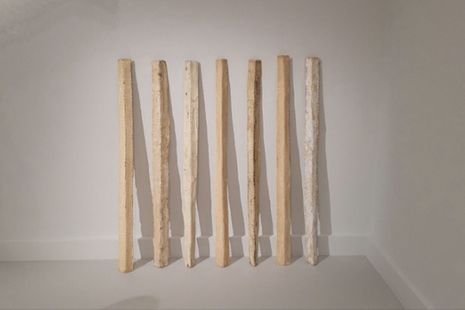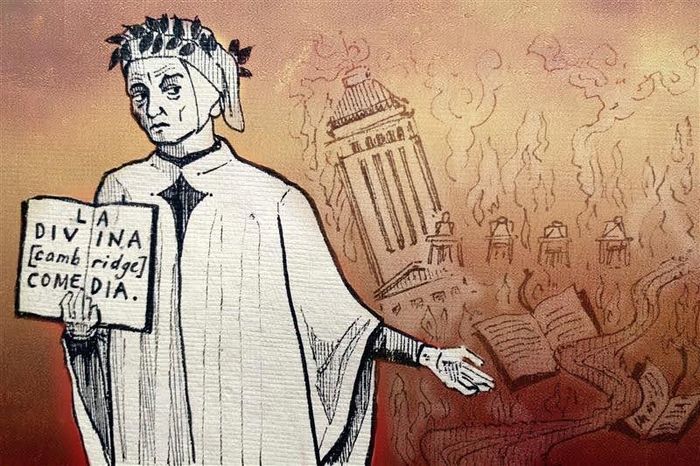‘Abstract Erotic’ at the Courtauld Gallery, London
Aaron Tan explores how the body can be depicted through art

Is sculpture all about the body? Sculpture, among the visual arts, has always held a uniquely powerful ability to activate the bodily imagination, and driven the most sustained investigations into bodily experience. If sculpture led Michelangelo to the vivisection table, one might assume that the pieces in the latest exhibition at London’s Courtauld Gallery, ‘Abstract Erotic’, continue this trajectory, excavating beneath the tendons and nerves to the infernal regions of sexuality. Such helpfully descriptive titles as ’Tits’ certainly reinforce this impression. Really, the exhibition does both this and more. What these sculptures drive us to think through their abstraction of bodily form, through their use of inert material to suggest rather than depict eroticism, is precisely the dimension of sexuality that exceeds both the bodily and the natural.
“It probed the very essence of eroticism itself, suggesting its inorganic, unnatural and indeed abstract dimension”
‘Abstract Erotic’ pays homage to a 1966 exhibition organised by the critic and curator Lucy Lippard, ‘Eccentric Abstraction’. It gathers the work of the three women featured in the exhibition, Alice Adams, Louise Bourgeois, and Eva Hesse, including some pieces exhibited in 1966. A playfully daring approach to material unites the three artists, who probe the expressive possibilities of latex, chain link fences, foam and more, exploring how their very material affordances might open up new formal possibilities. Alice Adams’ pieces draw upon her training as a weaver, unconventionally applying this practice to urban debris. In works such as ‘Threaded Drain Plate’ (c. 1964) and ‘22 Tangle’ (1964-8), steel cable and chain link amplify the tensions and intricacy of woven form. Eva Hesse’s use of netting in her pendulous, untitled sculptures lend their masses an oddly sensuous quality. Similarly, the raw textures of these materials contribute to a sense of tactility. Signs of decay, particularly in the over half-a-century old latex, place these artworks in the realm of the organic and the bodily.
Much of the exhibition seeks to be understood, in this way, in relation to the body. Exhibition text speaks of “bodily undertones,” “bodily presence,” the “sensuous response” that these sculptures evoke. Nonetheless, what I found most fascinating and valuable in the exhibition’s self-framing as ‘erotic’ was precisely the way it probed the very essence of eroticism itself, suggesting its inorganic, unnatural and indeed abstract dimension.
Nowhere is the body so clearly depicted here as in Louise Bourgeois’s blatantly phallic ‘Fillette’ (1968-9). Nowhere is the divergence of sexuality from the body – its excess – so sharply manifested. The feminine title only brings out the irony already latent in its comically blasé explicitness. Bourgeois is quoted in the exhibition catalogue as having once commented, “there has always been sexual suggestiveness in my work […] but I often merge the imagery — phallic breasts, male and female”. Much of the work here, similarly, in its libidinal merging of organic and inorganic, masculine and feminine, similarly situates eroticism in a space beyond such natural categories. Bourgeois’ work is deeply suffused with psychoanalysis, and indeed, this abstract dimension of sexuality is what the philosopher Alenka Zupančič, in her book What IS Sex? (2017), suggests is scandalous about the revelations of psychoanalytic theory. “The cause of embarrassment in sexuality,” she writes, “is not simply something which is there, on display in it, but on the contrary, something that is not there […] Sex is all around, but we don’t seem to know what exactly it is.”
“Perhaps sexuality lies in the gap between and around bodies, precisely an excess which cannot be grasped by the body”
I was particularly struck by this when viewing Alice Adams’ offbeat riff on minimalism: a series of corners used in drywall construction which have been propped up against the gallery wall — surely the show’s most puzzling display. Their textures evoke those of the surrounding sculptures, but their form stands in troubled relation to the notion of the organic. Their origin as urban refuse brings both connotations of manmade material and organic rubbish, while situating them in a site of productive excess. Their ambiguous organicism is doubled by their appropriation into aesthetic form organised along the most primitive lines: pure repetition, where active desire and unconscious drive intersect. The formal representation of eroticism is here brought to its limit, as the corners thus encapsulate that excessive gap, that ambiguous, uncertain space which Zupančič declares constitutive of sexuality itself.
Indeed, sexuality might thus be conceived as absence, rather than presence. Though the sculptures, as the exhibition text suggests, produce a “sensuous response” in viewers “even if they are not supposed to be touched” – perhaps eroticism lies precisely in this inability. Perhaps sexuality lies in the gap between and around bodies, precisely an excess which cannot be grasped by the body. Herein, I believe, lies the exhibition’s radical potential. The gendered circumscription of the artists represented in ‘Abstract Erotic’ – as a proxy for what Lucy Lippard in 1966 had termed a search for “feminist art” – could possibly (and rightfully, despite good intentions) be seen by some as perfunctory. Rather, more closely linked to the feminist cause – defined by a defiance of reified notions surrounding ‘natural’ sexual difference, gender roles, and heteronormativity – is these sculptures’ de-naturalising of sexuality itself, resituating its privileged domain beyond nature and the body, to the ethical and political. A fascinating reflection on the very potential of sculpture itself, the Courtauld’s first sculptural exhibition in recent memory is well worth a visit.
 News / Caius mourns its tree-mendous loss23 December 2025
News / Caius mourns its tree-mendous loss23 December 2025 News / Clare Hall spent over £500k opposing busway 24 December 2025
News / Clare Hall spent over £500k opposing busway 24 December 2025 Comment / Yes, I’m brown – but I have more important things to say22 December 2025
Comment / Yes, I’m brown – but I have more important things to say22 December 2025 Comment / The ‘class’ of Cambridge24 December 2025
Comment / The ‘class’ of Cambridge24 December 2025 Interviews / Politics, your own way: Tilly Middlehurst on speaking out21 December 2025
Interviews / Politics, your own way: Tilly Middlehurst on speaking out21 December 2025








